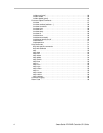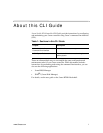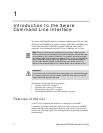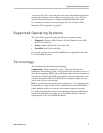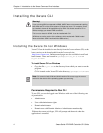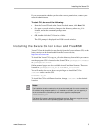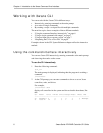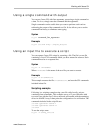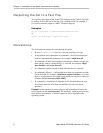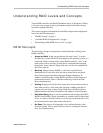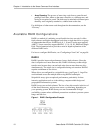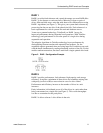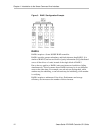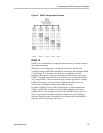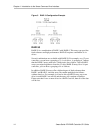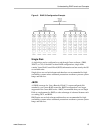
Chapter 1. Introduction to the 3ware Command Line Interface
8 3ware Serial ATA RAID Controller CLI Guide
Outputting the CLI to a Text File
You can have the output of the 3ware CLI, including errors, sent to a text file
by adding 2>&1 to the end of the line. This could be useful, for example, if
you want to email the output to AMCC Technical Support.
Examples
tw_cli /c2/p0 show >> controller2port0info.txt 2>&1
or
tw_cli /c0 show diag >> Logfile.txt 2>&1
Conventions
The following conventions are used through this guide:
• In text,
monospace font is used for code and for things you type.
• In descriptions and explanations of commands, a bold font indicates the
name of commands and parameters, for example, /c0/p0 show all.
• In commands, an italic font indicates items that are variable, but that you
must specify, such as a controller ID, or a unit ID, for example,
/c0/p0
show
attribute, and /cx/px show all
• In commands, brackets around an item indicates that it is optional.
• In commands, ellipses (...) indicate that more than one parameter at a time
can be included, for example, /c0/p0 show attribute [attribute ...], or that
there is a range between two values from which you can pick a value, for
example, /cx set carvesize=[1024...2048].
• In commands, a vertical bar (|) indicates an 'or' situation where the user
has a choice between more than one attribute, but only one can be
specified.
Example: In the command to rescan all ports and reconstitute all units, the
syntax appears as /cx rescan [noscan]. The brackets [ ] indicate that you may
omit the noscan parameter, so that the operation will be reported to the
operating system.



